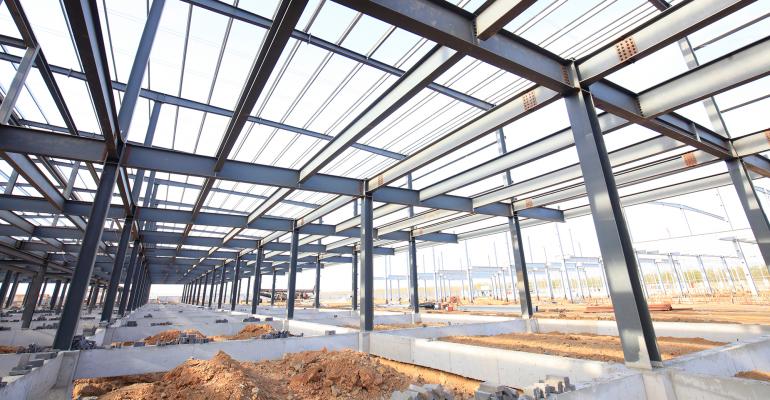The majority of respondents are also not worried about over supply. Those who think there is “too much” development occurring have remained in the minority for the past five years with a range of 7 percent to 11 percent, including 8.6 percent in the current survey. More respondents (42 percent) view the volume of new development occurring as the “right amount,” while those who think there is “too little” being built climbed from 22 percent in 2020 to 29 percent in this year’s survey.
According to Cushman & Wakefield, new supply totaled 352.9 million sq. ft. in 2020—a 5.7 percent increase compared to 2019. In addition, the firm was tracking 397.1 million sq. ft. of space under construction as of the first quarter of 2021.
Views were mixed on how much new supply their respective markets could absorb. Overall, 43 percent believe their markets could absorb 15 percent to 24 percent more new supply, while 38 percent said less than 15 percent of current inventory and 19 percent predict that their market could absorb more than 25 percent.
Mohr Capital is one firm that is planning to double its industrial development in 2021 with about 4.5 million sq. ft. of construction starts. The developer builds bulk warehouse facilities that it typically sells after securing leasing commitments from long-term, single net lease tenants. The group is developing a 7.5 million-sq.-ft. industrial park in suburban Indianapolis. They recently broke ground on a new 827,000-sq.-ft. spec bulk warehouse project at the Mohr Logistics Park. That project comes on the heels of a recently completed 1 million-sq.-ft. facility at the park that was fully leased to Cooper Tire & Rubber Co.
“The industrial market did take a pause last year, and everybody thought it was going to take a little bit longer to come out of the pandemic and turn around. But the industrial market is probably as hot as it’s ever been,” Bob Mohr, founder and chairman of Mohr Capital, a Dallas-based privately held real estate investment firm.
In many cases, product being built is nearly half pre-leased before it delivers, adds Fazekas. “So, we’re not seeing oversupply in any markets today. Demand is generally outpacing the new supply,” he says. The one market that was potentially concerning was Houston, which was hit by the pandemic and drop in oil prices. However, Black Creek has seen dramatic improvement with substantial demand and absorption over the last 90 days.
Although 55 percent of respondents report that their markets continue to see the removal of obsolete industrial space due to conversions to new uses, historical results show a clear downward trend in that activity over the past five years from a high of 70 percent in 2017. In addition, the removal of space is generating mixed results. Forty four percent believe that the removal of older space is balanced by new construction, 39 percent said it was resulting in lower overall industrial inventory and 17 percent continue to see net growth due to new construction.


